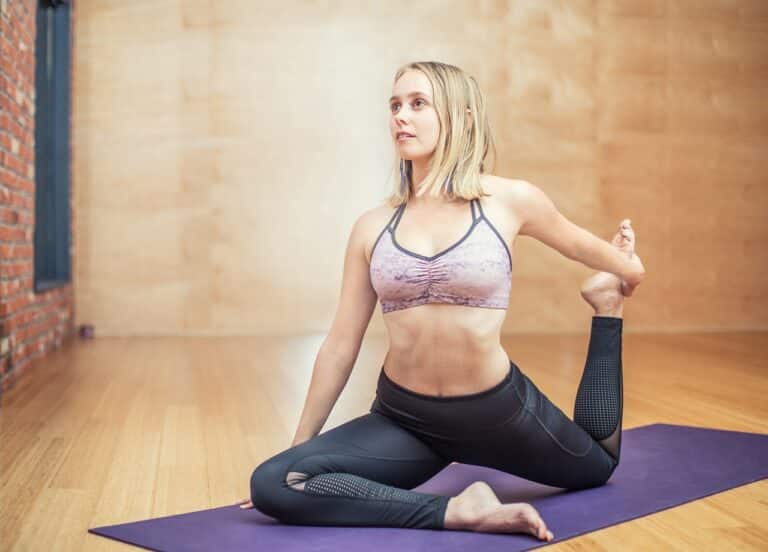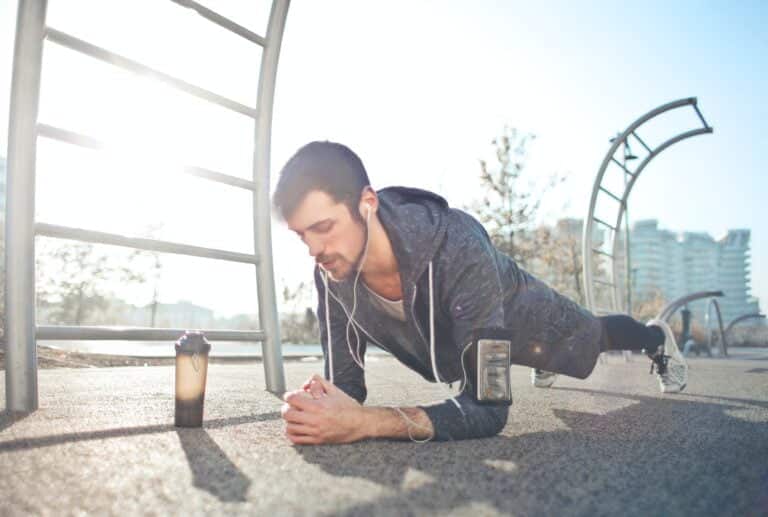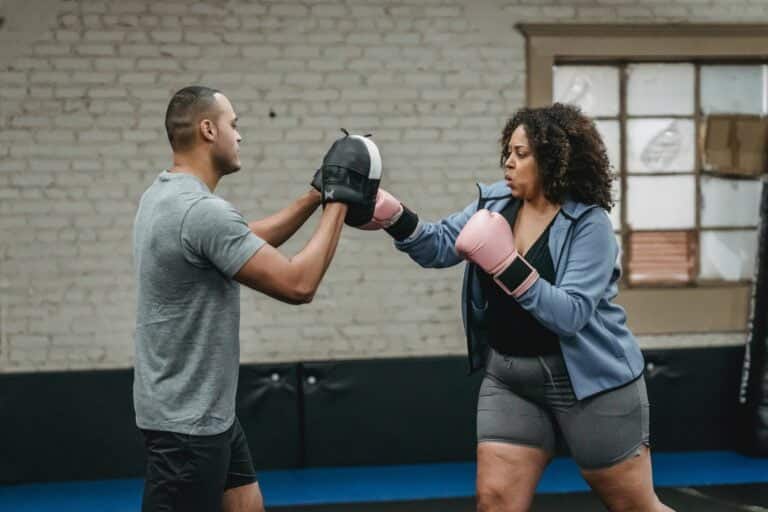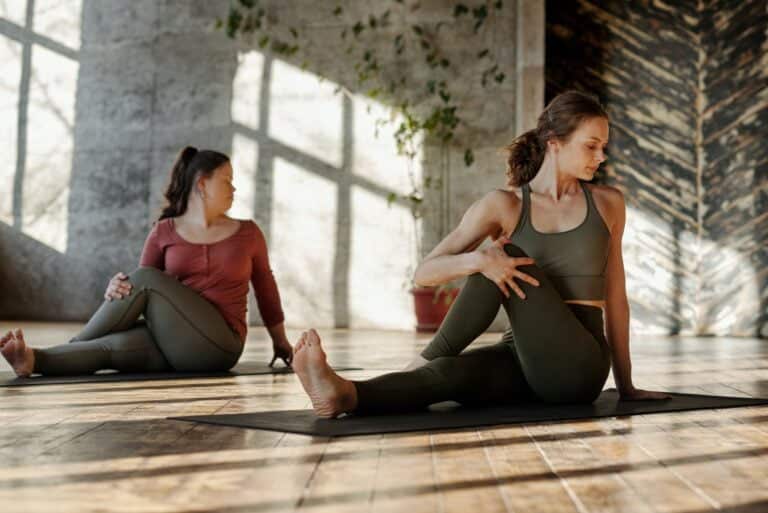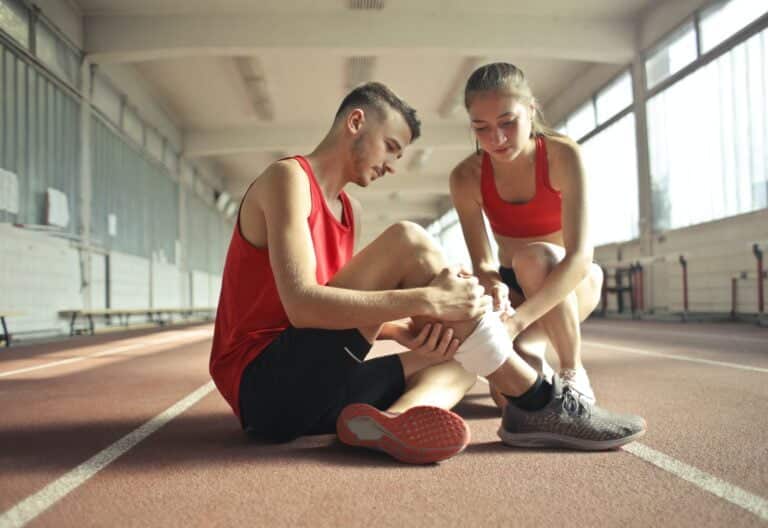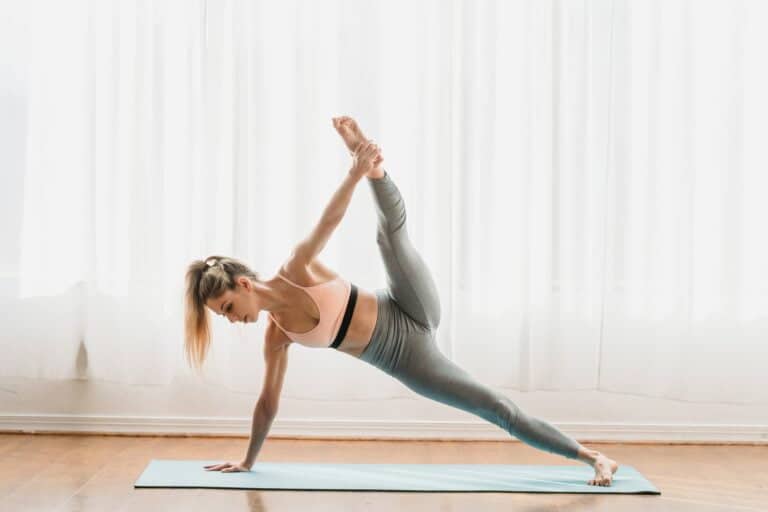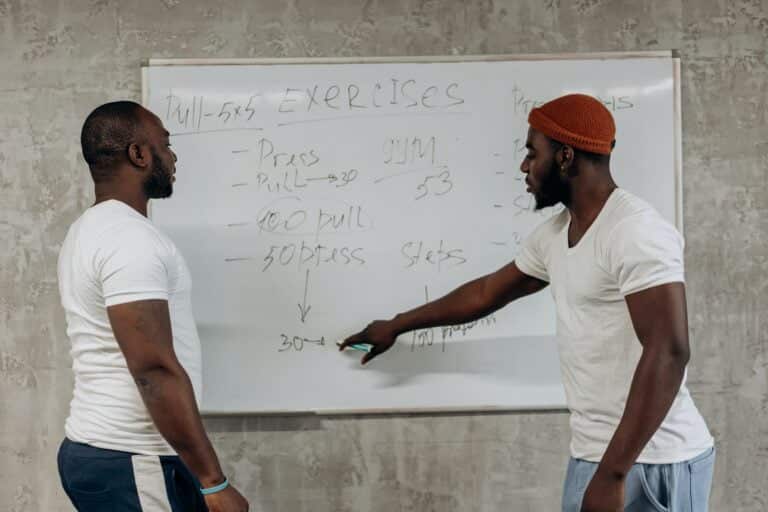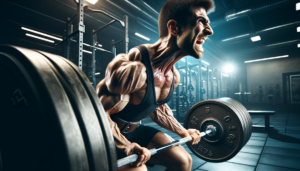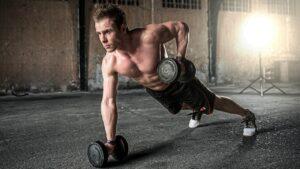Bodyweight Exercises: The Ultimate Tool for Full Body Workouts
When getting a total body workout without equipment, bodyweight exercises are the way to go. They require no equipment and can be done anywhere and at any time, making them the perfect option for those who prefer at-home workout routines or are always on the go.
Bodyweight training is a form of strength training exercise that uses the weight of your own body to build muscle mass and strength. These exercises can be done in various positions, from the traditional squat position to the high plank position, and they can be modified to suit any fitness level.
Some of the best bodyweight exercises in your body workouts include bodyweight squats, push-ups, tricep dips, jumping jacks, leg push-ups, pull-ups, and reverse lunges. These exercises target multiple muscle groups, including the upper body, lower body, and core muscles.
When performing bodyweight exercises, it’s essential to focus on proper form to prevent injury and to ensure that your body forms a straight line. Keep your feet hip or shoulder-width apart, and engage your core muscles to maintain stability throughout the entire circuit.
To get the most out of your bodyweight workouts, combine cardio with strength training exercises to target your cardiovascular system and muscle growth. To challenge yourself further, you can add advanced bodyweight exercises like one-leg push-ups or left-leg tricep dips.
Working out without equipment is not only convenient, but it’s also a great way to build lean muscle mass and stay in shape. And with the help of a certified personal trainer or an at-home workout program, you can get the full-body workout you need to achieve your fitness goals, all without a single weight or machine in sight.
The Benefits of Full Body Workouts Without Equipment
Full-body workouts without equipment have several benefits, making them a great addition to your fitness routine. These workouts use equipment-free bodyweight exercises, making them an affordable and convenient option for anyone.
According to Mayo Clinic, full-body workouts without equipment, such as bodyweight exercises, offer numerous benefits. They can help improve muscle strength, cardiovascular fitness, and flexibility. Additionally, these workouts are convenient and can be done anywhere, making them suitable for individuals who prefer at-home routines or have limited access to a gym.
Here are some benefits of whole-body bodyweight exercises:
1. Time-efficient: Equipment-free exercises such as high-intensity interval training (HIIT) workouts are quick, effective, and efficient. You can complete a full-body activity in as little as 15-20 minutes.
2. Better mobility and flexibility: Many bodyweight exercises require whole-body movement, improving mobility and flexibility. This is especially important for people with sedentary jobs or lifestyles that involve a lot of sitting.
3. Strengthen core muscles: Core muscles are engaged in most bodyweight exercises, leading to more muscular abs, back, and hip flexors. This improves your posture and helps to prevent injury.
4. Variety: Bodyweight exercises can be varied to include all muscle groups and provide a comprehensive workout. With equipment-free activities, you can mix things up and add variations to your move to keep it interesting.
5. Improves balance: Bodyweight exercises requiring standing on one leg or shifting weight from one side to another help improve balance and coordination.
Full-body workouts without equipment are a great way to engage your entire body in a workout routine. They are an excellent option for anyone looking to improve their fitness and can be modified to any fitness level. With no equipment needed, they can be done anywhere, making them a convenient option for people who travel frequently or have busy schedules.
Warm-Up and Cool-Down Techniques
Before starting any full-body workout without equipment, a proper warm-up and cool-down routine is crucial to prevent injury and enhance flexibility. A warm-up session should last 5-10 minutes and include cardio exercises like jacks, jogging in place, or burpees. This will get your blood pumping and increase your body temperature, which prepares your muscles for more intense bodyweight exercises.
To start the warm-up, stand with your feet shoulder-width apart, bend your knees slightly, and place your hands on your hips. Move your left leg back and lean forward, placing your left hand on the ground and your right arm reaching toward the ceiling. Repeat on the other leg.
Next, stretch your arms and legs to loosen up your joints and muscles. Start by standing with your feet flat on the floor and your legs straight. Bend forward and touch your toes. Please lift your left arm, bending it at the elbow and bringing your hand behind your head. Use your right hand to gently pull your left elbow towards the right side of your head, feeling a stretch in your left shoulder. Repeat with the other arm.
After finishing the bodyweight workout, it’s essential to cool down to prevent injuries and allow your body to recover. A cool-down routine is essential to slow your heart rate and relax your muscles. You can start with simple stretches, such as lunges and calf raises.
Start by standing with your feet shoulder-width apart, and bend your knees slightly. Move your left foot back and lower your left knee to the ground while keeping your right leg bent. Hold the position for a few seconds, then switch to the other leg.
Next, stretch your arms and shoulders by standing with your feet shoulder-width apart, and lift both arms above your head with your palms facing upward. Slowly lower your arms to your sides and bring your right arm across your chest, holding it in place with your left hand. Repeat on the other side.
Finally, end your cool-down with deep breathing exercises to calm your mind and regulate your heart rate. Incorporating warm-up and cool-down routines into your bodyweight or weight training sessions increase your flexibility, reduces the risk of injuries, and enhances your workout performance.
Proper Breathing Techniques
Proper breathing techniques are crucial in optimizing your full-body workouts without equipment. Understanding the importance of breathing and knowing when to inhale and exhale during different movements can enhance your performance, maintain stability, and maximize the benefits of each exercise.
During any physical activity, paying attention to your breath is essential. Here are some key guidelines to follow:
-
Inhaling and Exhaling: Generally, inhaling during an exercise’s eccentric or lowering phase and exhaling during the concentric or exertion phase are recommended. For example, during a squat, inhale as you lower your body and exhale as you push yourself back up to the starting position. This synchronized breathing pattern helps support your muscles and optimize your movements.
-
Core Engagement: When engaging the core during exercises like planks or push-ups, focus on exhaling as you contract your core muscles and inhaling as you release. This controlled exhale during core engagement helps stabilize your body and enhances overall strength and stability.
-
Deep Diaphragmatic Breathing: Emphasize deep diaphragmatic breathing throughout your workouts. Breathe deeply through your nose, expanding your diaphragm and lower abdomen, and exhale fully through your mouth. Deep breaths increase the oxygen supply to your muscles, promote relaxation, and help you maintain focus.
-
Breath Control and Rhythm: Maintain a steady and consistent breathing rhythm throughout your workout. Avoid holding your breath, as it can increase tension and decrease performance. Aim for a smooth and controlled breathing pattern that supports your movements and keeps you in the flow of your workout.
Individual breathing patterns may vary slightly based on personal preferences and comfort. Find a rhythm that works for you while maintaining proper form and technique. Practice mindful breathing during warm-up and cool-down exercises to develop a strong foundation for incorporating adequate breathing throughout your body workouts.
1. Push-Ups
Start with your palms flat on the floor, arms fully extended, and body straight. Lower yourself until your chest almost touches the floor, then push back up. Do as many reps as possible.
2. Plank
Starting position is with your palms flat on the floor, shoulders directly over your hands, and core engaged. Hold for as long as possible.
3. Squats
Starting position is with your feet shoulder-width apart; knees bent, and core engaged. Lower yourself until your thighs parallel the floor, then stand back up. Do as many reps as possible.
4. Lunges
Starting position is with your feet hip-width apart, right foot forward, and knees bent. Lower your body until your left knee almost touches the floor, then stand back up. Repeat on the other side. Do as many reps as possible.
5. Burpees
Starting position is standing with your feet shoulder-width apart. Lower your body into a squat position, then kick your feet back into a push-up place. Do a push-up, return your feet to the squat position, and jump as high as possible. Do as many reps as possible.
6. Jumping Jacks
Starting position is standing with your feet together and arms at your sides. Jump your feet out to the sides, raise your arms overhead, and jump back to the starting position. Do as many reps as possible.
7. Mountain Climbers
Starting position is in a push-up place. Bring your right knee to your chest, then quickly switch to your left knee. Continue beating your knees as soon as possible. Do as many reps as possible.
8. Plank Jacks
Starting position is in a plank position. Jump your feet out to the sides and back to the middle as quickly as possible. Do as many reps as possible.
9. Bicycle Crunches
Starting position is lying on your back with your knees bent and your hands behind your head. Bring your right elbow to your left knee while extending your right leg out, then switch sides. Do as many reps as possible.
10. HIIT Workout
Choose 5-10 of the above exercises and do each for 30-60 seconds with minimal rest in between. Repeat the circuit for 3-4 rounds.
Remember to keep your core engaged, your spine straight, and your knees bent to prevent injury and maximize results.
Progression and Modifications
Congratulations on completing the list of 10 effective full-body workouts without equipment! Now that you have mastered these exercises, it’s time to take your fitness journey to the next level. This section will discuss how you can progress and modify these workouts to keep challenging yourself as your fitness levels improve.
Increasing Repetitions
A straightforward way to progress your workouts is by increasing the repetitions you perform for each exercise. Add a few extra reps to each set and gradually work your way up. For example, if you were doing ten push-ups, aim to increase them to 12 or 15. You can continue adding repetitions to challenge yourself as you get stronger.
Adding Variations
Another way to keep your workouts exciting and challenging is by incorporating variations of the exercises. For example, you can try jumping or shooting squats instead of traditional squats.
By adding variations, you engage different muscle groups and increase the difficulty of the exercise. Explore different bodyweight exercise variations and experiment with them to find the best ones for you.
Increasing Intensity
To further push your limits, you can increase the intensity of your workouts. This can be achieved through various methods, such as incorporating interval training or implementing advanced variations of the exercises. For instance, you can try performing explosive movements during burpees or adding a plyometric element to exercises like lunges or push-ups. Increasing the intensity challenges your cardiovascular system and helps build strength and endurance.
Incorporating Props or Weights
While the initial focus of this article was on equipment-free workouts, as you progress, you may consider incorporating some simple props or weights to add resistance to your exercises.
This could include resistance bands, dumbbells, or even household items like water bottles or backpacks filled with books. By introducing external resistance, you can further challenge your muscles and continue making progress.
Remember, the key to progression is gradual and consistent advancement. Listen to your body and only increase the difficulty when you feel ready. Maintaining proper form and technique throughout your workouts is essential to prevent injury. Consult a fitness professional for guidance if you’re unsure about specific exercise variations or progression methods.
Injury Prevention Tips
In addition to proper breathing techniques, prioritizing injury prevention is crucial during full-body workouts without equipment. By following these tips, you can maintain good form, listen to your body’s limits, and incorporate rest days effectively:
Maintain Proper Form
Pay attention to your body’s alignment and technique during exercises. Focus on engaging the correct muscles and maintaining good posture throughout each movement. Proper form not only maximizes the effectiveness of the training but also minimizes the risk of strain or injury.
Listen to Your Body's Limits
Respect your body’s signals and avoid pushing yourself beyond your current capabilities. Gradually increase the intensity or difficulty of exercises rather than making sudden drastic changes. Pushing too hard or ignoring pain can lead to overuse injuries or other complications.
Incorporate Rest Days
Allow your body sufficient time to recover and rebuild. Rest days are essential for muscle repair and growth. Aim for at least one or two days of rest per week. On rest days, light stretching or low-impact activities promote blood flow and support recovery.
Seek Professional Guidance
If you experience persistent pain or discomfort or have concerns about your form or technique, it’s recommended to consult a qualified fitness professional. They can provide personalized guidance and ensure you perform exercises correctly to prevent injuries.
By integrating proper breathing techniques and following injury prevention tips, you enhance stability, improve focus, and maximize the benefits of each exercise while minimizing the risk of injuries.
Take the time to consciously incorporate deep diaphragmatic breathing, synchronized inhaling and exhaling, proper form, and rest days into your whole-body workouts. With consistent practice and a mindful approach, you can achieve your fitness goals safely and effectively.
Workout Tips to Maximize Results
Incorporating full-body workouts without equipment into your fitness routine is an excellent way to fit anywhere, anytime. To maximize your results and make the most out of each exercise, here are some tips to follow:
1. Engage your body weight – bodyweight exercises are highly effective in toning your muscles, building strength, and increasing endurance. Push-ups, lunges, and squats work for multiple muscle groups.
2. Bend your knees – keep your knees slightly bent while performing squats and lunges. This will protect your knees from unnecessary strain and allow for better balance and control.
3. Slow and controlled movements – when performing any exercise, focus on slow and steady movements. This helps prevent injuries and targets the muscles better for optimal results.
4. Focus on form – form is crucial for full-body workouts. Proper form ensures you work the correct muscle groups and do not unnecessarily strain other areas.
5. Increase intensity gradually – start with a moderate intensity level and gradually increase it as your fitness level improves. Over time, this will lead to significant improvements in strength and endurance.
Incorporating these tips into your full-body workouts without equipment will maximize your results and help you achieve your fitness goals faster. Remember to listen to your body and adjust your workouts accordingly. Happy exercising!
Importance of Nutrition
When it comes to achieving your fitness goals, it’s important to remember that your diet plays a significant role in the process. A healthy and balanced diet rich in essential nutrients is crucial for supporting your body during full-body workouts.
Before starting any full-body workout routine, it’s important to ensure you consume enough carbohydrates, proteins, and healthy fats. These nutrients give your body the fuel and energy to power through intense workouts and help build muscle.
Additionally, hydration is key in optimizing your performance during full-body workouts. Ensure you drink plenty of water before, during, and after your workout. Dehydration can lead to muscle cramps and fatigue, so staying hydrated is important.
During full-body workouts, you must fuel your body by consuming snacks or meals high in carbohydrates. For example, you could have a banana or a piece of toast with peanut butter before your workout to help fuel your body and prevent muscle fatigue.
After your full body workout, refuel with a balanced meal that includes a source of lean protein, such as chicken or fish, and complex carbohydrates, like brown rice or quinoa. This will help repair and rebuild your muscles after a challenging workout.
Lastly, don’t forget to give your body time to recover. Remember to take rest days and incorporate stretching into your routine to avoid injury. Keeping your body healthy through a balanced diet will help maximize your results from full-body workouts and ensure you reach your fitness goals.
Recovery Methods for Full Body Workouts
A critical aspect of full-body workouts is proper recovery. Giving your body rest and recovery after a challenging workout can help prevent injury and improve overall performance.
WebMD advises incorporating rest days into your full-body workout routine to allow for proper muscle recovery. Rest days help prevent overtraining and reduce the risk of injury.
Here are some effective recovery methods to try after your full-body activities:
1. Stretching: Gentle stretching can help ease soreness and promote muscle recovery. Focus on stretching all the major muscle groups used during your workout, including the hips, hamstrings, quads, chest, and shoulders. Don’t forget to breathe deeply and hold each stretch for at least 30 seconds.
2. Foam rolling: Using a foam roller on your muscles can help release tension and increase blood flow, which aids in muscle recovery. Focus on the major muscle groups and use a slow, controlled motion while rolling.
3. Ice and heat therapy: Alternating between ice and heat therapy can help reduce inflammation and promote healing. Use ice for the first 24-48 hours after a workout to reduce swelling and heat treatment to increase blood flow.
4. Hydrate: Drink plenty of water before, during, and after your workout to help flush out toxins and promote muscle recovery.
5. Rest and sleep: Giving your body enough time to rest and recover is crucial. Aim for 7-8 hours of sleep per night and listen to your body when it needs rest.
Remember to listen to your body and take the necessary time to recover after a challenging full-body workout. And don’t forget to keep those knees bent during stretching to prevent any unnecessary strain or injury.
Sample Workout Plans
To help you structure your full-body workouts without equipment, here are sample workout plans incorporating the exercises mentioned in this article. Choose a plan based on your fitness level and adjust the intensity or duration as needed:
Beginner Workout Plan (30 minutes)
-
Bodyweight Squats: 3 sets of 10 repetitions
-
Push-Ups: 3 sets of 8 repetitions
-
Lunges: 3 sets of 10 repetitions per leg
-
Plank: Hold for 30 seconds
-
Jumping Jacks: 3 sets of 15 repetitions
Intermediate Workout Plan (45 minutes)
-
Bodyweight Squats: 4 sets of 12 repetitions
-
Push-Ups: 4 sets of 10 repetitions
-
Lunges: 4 sets of 12 repetitions per leg
-
Plank: Hold for 45 seconds
-
Mountain Climbers: 3 sets of 15 repetitions per leg
Advanced Workout Plan (60 minutes)
-
Burpees: 4 sets of 10 repetitions
-
One-Leg Push-Ups: 3 sets of 8 repetitions per leg
-
Jump Squats: 4 sets of 12 repetitions
-
Bicycle Crunches: 3 sets of 15 repetitions per side
-
Plank Jacks: 3 sets of 12 repetitions
Feel free to modify these plans to suit your preferences and fitness goals. Remember to maintain proper form, focus on breathing, and listen to your body throughout each workout. Gradually increase the intensity or difficulty of exercises as you progress.
Recommended Rest Days
Rest days are essential to any fitness routine, including full-body workouts without equipment. Resting and recovering are vital for muscle repair, growth, and well-being. Incorporating rest days helps prevent overtraining and reduces the risk of injury.
Consider engaging in light stretching or low-impact activities on rest days to maintain blood flow and promote muscle repair. Activities like yoga, walking, or swimming can help with active recovery and improve your fitness.
Remember, rest days are not a sign of weakness but a necessary component of a balanced fitness routine. Listen to your body; adjust your workout schedule accordingly if you experience persistent fatigue or soreness. Taking care of your body during rest days will improve performance and long-term progress.
Conclusion
Incorporating full-body workouts without equipment into your fitness routine offers many benefits, including convenience, affordability, and effectiveness. Bodyweight exercises are powerful for building strength, improving flexibility, and targeting multiple muscle groups. You can maximize your results and achieve your fitness goals by following proper warm-up and cool-down techniques, engaging in various exercises, and focusing on form and intensity. It’s important to remember that nutrition and hydration play a crucial role in supporting your body during workouts, and proper recovery methods, such as stretching, foam rolling, and adequate rest, are essential for preventing injuries and optimizing performance. Whether at home, in the office, or on the go, these ten effective full-body workouts without equipment provide a versatile and accessible way to stay fit anywhere. So get moving, embrace the power of bodyweight exercises, and enjoy the benefits of a strong and healthy body without needing a gym or specialized equipment.
FAQs
A: Full-body workouts without equipment are exercise routines that target multiple muscle groups and can be performed anywhere without specialized gym equipment. They rely on bodyweight exercises to build strength, improve flexibility, and increase endurance.
Full-body workouts without equipment offer several advantages. They are convenient and can be done at home, in the office, or while traveling. They are also cost-effective since you don’t need to invest in expensive exercise machines or gym memberships. Additionally, these workouts engage multiple muscle groups, providing a comprehensive and efficient way to stay fit.
Some popular bodyweight exercises for full-body workouts include push-ups, squats, lunges, planks, burpees, jumping jacks, mountain climbers, bicycle crunches, and many more. These exercises target muscles like the upper body, lower body, and core.
To perform bodyweight exercises with proper form, it’s essential to maintain a straight body alignment, engage your core muscles, and focus on controlled movements. Keep your feet hip or shoulder-width apart, and follow the specific instructions for each exercise to ensure you’re targeting the intended muscle groups and avoiding unnecessary strain.
Full-body workouts without equipment can contribute to muscle growth and weight loss. Bodyweight exercises challenge your muscles, promoting muscle development and toning. Additionally, these workouts are often high-intensity and can help burn calories, leading to weight loss combined with a balanced diet and proper nutrition.
Sources
https://www.everydayhealth.com/fitness/the-best-bodyweight-exercises-for-working-out-every-part-of-your-body/
https://www.mayoclinic.org/healthy-lifestyle/fitness/in-depth/strength-training/art-20046670
https://www.healthline.com/health/fitness/whats-a-good-full-body-workout-for-mass
https://www.webmd.com/fitness-exercise/what-to-know-rest-day-workouts
https://www.washingtonpost.com/wellness/interactive/2022/bodyweight-workout-hiit-anywhere/
https://greatist.com/fitness/50-bodyweight-exercises-you-can-do-anywhere#what-is-a-bodyweight-workout


